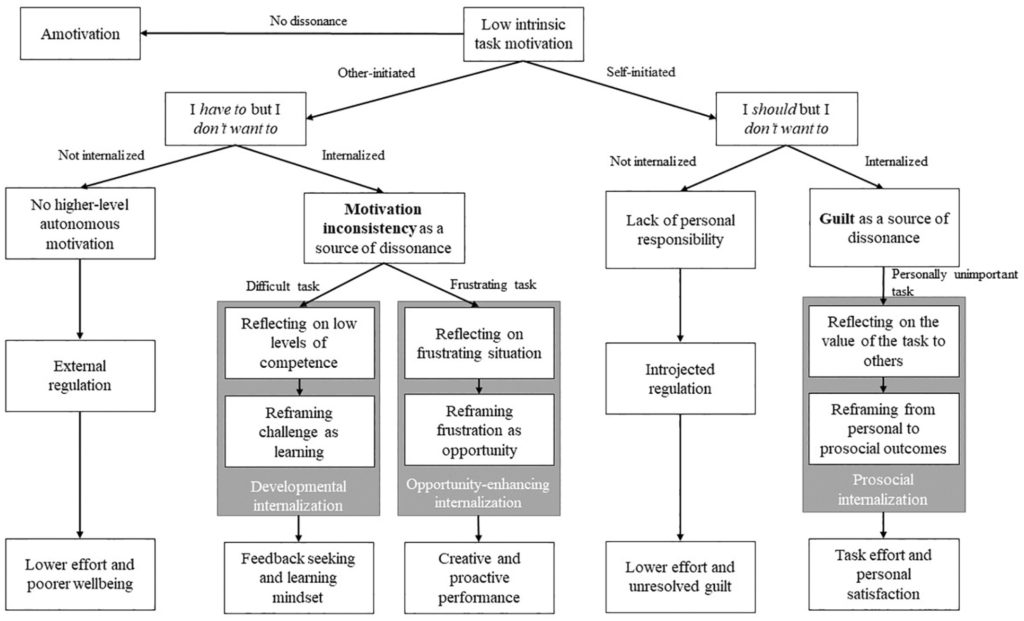How does internalization of motivation take place?
How does internalization of motivation take place? It often happens that we have to do things that we do not find inherently fun or interesting. If this is the case, we need another reason to carry out the activity with motivation. Motivational internalization plays an important role here. Bex Hewett researched how internalization occurs.
Internalization of Internalization: what and why?
- Self-determination theory (SDT) sees internalization of motivation as a proactive process by which people absorb the reason for performing a task.
- When this happens, they endorse doing the task in question. In modern language: ownership emerges. In the language of self-determination theory: they become autonomously motivated.
- Autonomous motivation contributes to feeling good and functioning well.
Study by Bex Hewett
- Until now, not much is known about how this internalization occurs. Bex Hewett (2022) researched this.
- She conducted interviews with 40 employees of two charities. about their motivation for the tasks they had to perform.
- One of the key questions she asked was, "Can you describe something you've been working hard on recently, even though you had no motivation to do so initially?"
Cognitive dissonance and cognitive reframing
Hewett found that the following two processes occur in internalization:- Cognitive dissonance as a trigger for internalization: Cognitive dissonance is an uneasy feeling resulting from 'conflicting action tendencies'. On the one hand you don't want it (because you don't like it), on the other hand you feel some reason to do it anyway.
- The internalization itself: it consists of reflecting on the situation, reframing the situation and determining your attitude and behavior.
Two sources of cognitive dissonance
Hewett describes two sources of cognitive dissonance:- Other-initiated: This involves inconsistent motivation: “I find the task difficult but it is expected of me (for example by a supervisor) or “I find the task frustrating (/annoying) it is expected of me (for example by a supervisor ).
- Self-initiated: This involves a feeling of guilt: "I don't like the task, but I think I should do it."
Consequences of not internalizing
If the cognitive dissonance is not large enough to initiate the internalization process, the motivation is not internalized. If the person does do the task anyway (because others expect it to), this is accompanied by little effort and a general feeling of badness or guilt.The internalization process in three steps
As mentioned, Hewett found that the internalization process consists of three steps:- Reflection: face the situation (of the cognitive dissonance) and think about what you want with it.
- Reframing: Finding another way of looking at the situation and thereby finding a reason to do the task.
- Choosing attitude and actions: Determine how you look at the task and take steps to perform the task.
Three types of internalization
Hewett discovered three types of internalization are:- Developmental internalization: Used by people when they have to perform tasks that they find difficult. They then redefine the situation as one that offers them an opportunity to learn something new. This way of reframing puts them in a feedback-seeking and learning attitude.
- Opportunity Enhancing Internalization: Used by people when they have to perform tasks that they find frustrating. They then redefine the situation as one that can bring them something of value, can bring them an advantage. This way of reframing puts them in a creative and proactive attitude.
- Prosocial Internalization: Used by people when they don't like the task but feel they should be doing it. They then redefine the situation as one that can bring something of value to others, a way to make a valuable contribution. This way of reframing ensures that they are committed and get personal satisfaction from performing the task.


Comments